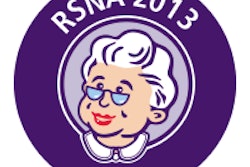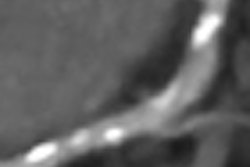A study of more than 25,000 patients in Michigan shows that inappropriate use of coronary CT angiography (CCTA) can be drastically curtailed by educating the doctors who order heart scans, according to results published on August 8 in the Journal of the American College of Cardiology.
Researchers found that physician education in appropriate use of CCTA exams was associated with substantial reductions in inappropriate scans, as well as robust increases in appropriate ordering soon after the education program was implemented.
The results were the product of Michigan's continuous quality improvement (CQI) initiative, sponsored by healthcare payor Blue Cross/Blue Shield and led by physicians at Beaumont Hospital in Royal Oak and several other centers in the state. The program was initiated in 2007 with the aim of improving quality control and curbing overuse of cardiac imaging exams, with utilization guidelines based on the 2006 multisociety appropriate use guidelines.
The program cut inappropriate use of CCTA exams by one-fourth and boosted appropriate use by nearly two-thirds, according to lead investigator Dr. Kavitha Chinnaiyan, of William Beaumont Hospital, and colleagues.
"A collaborative effort like this between payors and physicians really works," Chinnaiyan told AuntMinnie.com. "The physicians take responsibility for changing our practice patterns -- as opposed to payors telling us you can't do this or that -- and it has worked really well."
Fears of missed diagnosis
Coronary artery disease is responsible for more than half of the cardiovascular deaths in the U.S., and it remains the leading cause of morbidity worldwide, the researchers noted. Unfortunately, fears of missing a diagnosis have led to overuse of coronary CT angiography, particularly among patients presenting to emergency rooms with chest pain; this has led to higher healthcare costs and has invited high levels of scrutiny from healthcare payors (JACC, August 8, 2012).
In a broad effort to curb imaging overuse and establish common criteria for CT and MRI of the heart, multisociety appropriate use criteria (AUC) for cardiac CT and cardiac MRI were published in 2006 (and updated in 2010). Meanwhile, Michigan's CQI program was established in 2007 under the aegis of the 47-hospital Advanced Cardiovascular Imaging Consortium (ACIC), whose goal was to incorporate the guidelines into daily clinical practice. The current study aimed to determine the effectiveness of the program as it applies to CCTA.
The preintervention period ran from July 2007 to June 2008, followed by the intervention period from July 2008 to 2010 and a follow-up period from July to December 2010, during which time all CCTA patients were enrolled in ACIC's participating Michigan hospitals.
During the intervention period, Chinnaiyan, Dr. Patricia Peyser, Dr. Tauqir Goraya, Dr. Karthikeyan Ananthasubramaniam, Dr. Michael Gallagher, and colleagues in ACIC's management team promoted a program of continuous education to referring physicians, while warning that failure to meaningfully reduce inappropriate imaging exams could lead to a loss of reimbursement from third-party payors.
The educational program was site-specific across the 47 facilities, with a primary emphasis on interventions led by so-called clinical champions, Chinnaiyan said.
"Every center has one physician who is a clinical champion," she said. "We entrusted the educational program to the champions, and said you go and educate your referring physicians about appropriate use in whatever you way you think is fit -- whether it's grand rounds or having meetings with colleagues or sending out letters."
The carrot
A secondary emphasis of the CQI program was continuing education. The management team set up conferences offering 3.75 continuing medical education credits that were held in May 2010 at four locations across the state.
"Physicians could come and learn about CT in general, and appropriate use was part of that," Chinnaiyan said. "It wasn't required but encouraged -- an additional thing to what the clinical champions were doing."
During the study period, data were collected on patients undergoing CCTA at the 47 participating centers. ACIC data included demographics, risk factors, symptoms, results of prior testing, and medical history. Patients were also interviewed before their scans for symptoms and medical history, and the data collection process was audited. Finally, data were collected on adverse events including death, acute coronary syndromes, and coronary revascularization. In all, 25,387 patients were included in the study analysis.
Throughout the intervention period, the ACIC management team monitored referral patterns and stayed in touch with the clinical champions when the educational effort wasn't leading to significant reductions in inappropriate use.
"We were encouraging them on a one-by-one basis, calling them and sending them letters to see how we could help as an executive team with improving appropriate use," Chinnaiyan said. "It was pretty intensive, but what we saw is that this kind of approach resulted in really significant decreases in inappropriate use."
The effort was successful: Compared with the preintervention period, there was a 23.4% increase in appropriate CCTA use (from 61.3% to 80%, p < 0.0001) and a 60.3% decrease in inappropriate use (from 14.6% to 5.8% p < 0.0001). There was also a 40.8% drop in "uncertain" use (from 10.3% to 6.1%, p < 0.0001) and a 41.7% drop in unclassifiable scans (from 13.9% to 8.1%, p < 0.0001).
"And the most important thing was that it was seen across all physician specialties: cardiologists, internal medicine physicians, emergency medicine physicians," and so on, she said.
Between the preintervention and postintervention periods:
- Cardiology saw gains in appropriate use from 60.4% to 79.5% and reductions in inappropriate use from 13% to 5.2% (p < 0.0001).
- Internal medicine and family practice realized gains in appropriate use from 51.1% to 70.4%, while inappropriate use fell from 20.2% to 12.5% (p < 0.0001).
- Emergency medicine physicians saw gains in appropriate use from 83.6% to 91.6% and reductions in inappropriate use from 9.1% to 0.6% (p < 0.0001).
- Other physicians realized gains in appropriate use from 61.1% to 83.2%, while inappropriate use dropped from 18.6% to 5.9% (p < 0.0001).
The main causes of inappropriate imaging were CCTA in asymptomatic patients, and CCTA in high-risk patients with acute symptoms who should have bypassed CCTA in favor of direct referral to the cath lab, she said.
Study limitations
Chinnaiyan noted several study limitations. For example, along with the Deficit Reduction Act of 2005, which reduced overall imaging use in the U.S., there was a general increase in awareness of smarter imaging policies around the same time the CQI program was initiated. These concurrent trends cannot be completely separated from the educational initiative, she said.
"The whole landscape of imaging was changing," Chinnaiyan said. "But I think part of the reason why we see the change is the site-specific intervention at all 47 centers, which are academic centers, community hospitals, everything. Every physician has a clinician who is the clinical champion of that center."
And because the educational focus is ongoing, the reductions in inappropriate use have only solidified since the study ended. Fewer than 5% of exams today are found to be inappropriately ordered per the multisociety guidelines, in a cohort that now includes more than 32,000 patients, Chinnaiyan said.
Best of all, the wealth of data is opening a window on the next questions to be answered, she said. The investigators are tracking outcomes with an eye toward researching the appropriateness of the appropriate use criteria themselves.
"We are looking at [CCTA] use in asymptomatic individuals to find out if it really is inappropriate, and if so, which are the inappropriate ones, and what is the alternative pathway for them," she said.
Chinnaiyan said she recently presented an abstract demonstrating that asymptomatic patients actually have more coronary artery disease than symptomatic ones.
"These patients were selected well [for CCTA] by their physicians," she said. "They have more risk factors, and when you look at them, they have actually more severe disease as well as more nonobstructive disease. It's a very serious thing to look at. So is [CCTA] actually being used appropriately in the community? That's something we're looking at now."



















